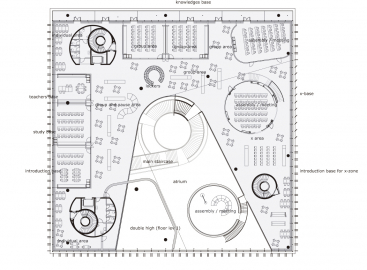Ørestad College
The final design of Ørestad College came about after a process of thorough analysis and research into the needs and ideas of the students, the staff and the educational experts we took on board as consultants. During this process it became clear that one of the great challenges would be to ensure a higher degree of knowledge sharing between science and the humanities.
Structure
Instead of a traditional lay-out with class-rooms, much more transparent and easy accessible room structures had to be provided. Four boomerang shaped storey decks rotate in relation to each other like the shutter of a camera. This forms the strong superstructure that becomes the overall framework of the college simple, manageable and flexible. The four storey decks provide space for the colleges four study zones. Each zone is on one level, providing maximum organisational flexibility, with the option of micro adjustment to create different spaces, learning environments and group sizes. Rotation projects and suspends part of each deck into the high central hall, occupying the so called X zone the spatial expression of interdisciplinary activity between study zones with physical and visual links. The storey decks are open towards a central core, where a broad spiral main staircase twists upwards to the roof terrace. Three mega columns form the primary load bearing system, supplemented by a number of smaller columns positioned according to structural requirement, not as part of a regular grid.
Open learning
Everybody, students and staff, meet and lunch in the open hall/cantina, which is at the same time leading to the lower level with the sports facilities. When this area is used as stage for school drama or parties, the cantina amphitheatre structure turns into seats for the spectators. The syllable of Ørestad Gymnasium focuses on media studies, and the building comprise auditoriums for screenings, editing and presentations. As all students have access to lap-tops and wi-fi internet connections the fat-boy lounges on top of the auditoriums function as more than just rooms for relaxation. Indeed, the wide railings for example, are designed to function as tables where you can stand with your lap-top. The superstructure is supplemented by a series of newly developed room furniture, which accommodate the need for the flexible and temporary room arrangements and learning environments required by varying group sizes from one on one to an entire cohort. All in all, emphasis has been on providing space for open learning, knowledge sharing and cross-disciplinarity.
Sustainability
Having one, open structure with only a few traditional auditoriums, created a demand for fine-tuned acoustics. This, as well as an indoor climate based on basic solar heating and natural ventilation was part of the thoroughly developed solutions made possible by a close cooperation between, consultants, engineer and architect. Automatic control of the sun shading system ensures a pleasant climate as well as an energy saving use of solar heating. When finished, the roof garden will become a science lab with green houses etc. for the naturalists.

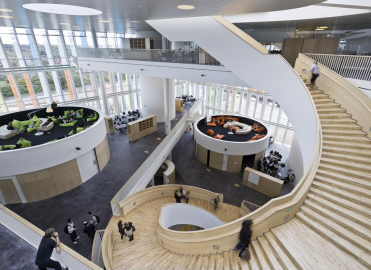 © Adam Mørk
© Adam Mørk
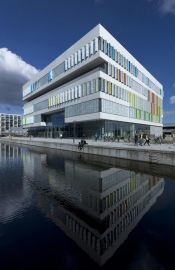 © Adam Mørk
© Adam Mørk
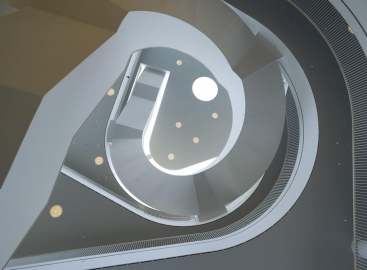 © Adam Mørk
© Adam Mørk
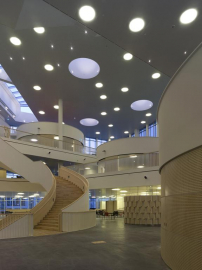 © Adam Mørk
© Adam Mørk
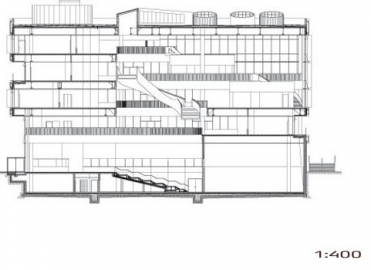
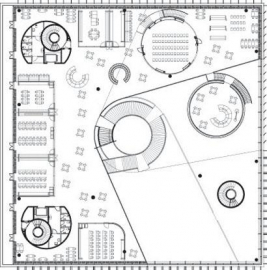
.jpg)
